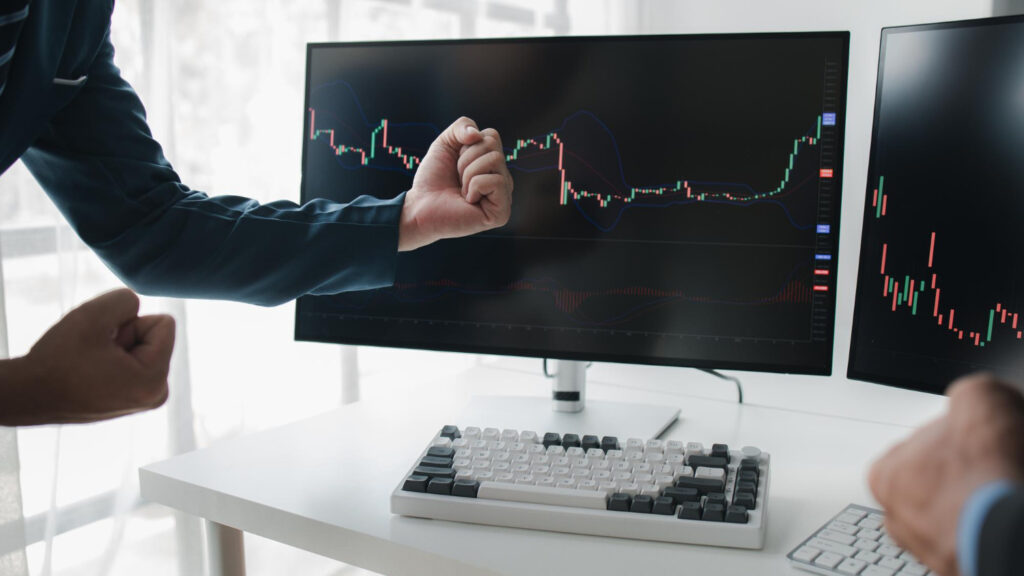In the ever-evolving landscape of cryptocurrency, the term “margin call” has become synonymous with both opportunity and danger. For those who dare to tread the volatile waters of crypto trading, understanding this concept is not just beneficial—it’s crucial. But what exactly is a margin call, and why has it garnered so much attention in the crypto realm? Let’s unravel the mystery.
Table of Contents
What is a Margin Call?
Definition and Basic Concept
A margin call occurs when the value of an investor’s margin account falls below the broker’s required amount, known as the maintenance margin. It’s essentially a demand from the broker for the investor to deposit additional money or securities to bring the account back up to the minimum required level.
Historical Context: Margin Calls in Traditional vs. Crypto Markets
While margin calls have long been a part of traditional stock markets, their role in the crypto world is relatively new, yet equally impactful. The decentralized nature of cryptocurrencies brings about a unique set of challenges and opportunities when it comes to margin trading.
1. Traditional Markets:
- Origins: The concept of buying on margin dates back to the early 20th century when stock market speculators would borrow money to purchase more shares, hoping to amplify their profits.
- The Great Depression: One of the most notable historical events related to margin calls was the stock market crash of 1929. Leading up to the crash, excessive margin trading and speculative investments inflated stock prices. When the market began to decline, a cascade of margin calls forced the sale of assets, exacerbating the downturn and leading to the Great Depression.
- Regulation: In response to the 1929 crash, regulations were introduced to control margin trading. The U.S. Securities and Exchange Commission (SEC) established minimum margin requirements to reduce the risks associated with leveraged trading.
- Modern-Day Implications: Margin calls continue to play a role in modern financial crises. For instance, during the 2008 financial crisis, many financial institutions faced margin calls due to the declining value of mortgage-backed securities in their portfolios.
2. Crypto Markets:
- Emergence: With the rise of cryptocurrencies, new trading platforms emerged, allowing traders to engage in margin trading with digital assets. Given the volatile nature of cryptocurrencies, this introduced a new level of risk and potential reward.
- High Volatility: Cryptocurrencies are known for their extreme price volatility. This volatility can lead to rapid and significant price drops, triggering margin calls for many traders simultaneously. For instance, during significant market corrections, there have been instances where billions of dollars in positions were liquidated in a matter of hours.
- Differences in Regulation: Unlike traditional markets, which have established regulatory frameworks, crypto markets are less regulated. This means that crypto exchanges might offer higher leverage ratios, leading to increased risks for traders.
- Flash Crashes: The crypto market has seen several “flash crashes” where the price of a cryptocurrency drops dramatically in a very short period, often due to a cascade of margin calls and liquidations. These events highlight the unique challenges and risks of margin trading in the crypto realm.
3. Shared Characteristics:
- Leverage: Both traditional and crypto markets allow traders to amplify their potential profits through leverage. However, this also magnifies potential losses.
- Risk Management: In both markets, traders employ various risk management strategies, such as setting stop-loss orders, to mitigate the risks associated with margin trading.
- Liquidity Concerns: Margin calls can lead to liquidity issues in both traditional and crypto markets. If many traders face margin calls simultaneously, it can strain the liquidity of a platform or exchange.
The Mechanics of Margin Trading in Crypto

Margin trading in the cryptocurrency world is a method that allows crypto traders to open positions using borrowed funds. It’s a high-risk, high-reward strategy that can amplify both gains and losses. Here’s a comprehensive breakdown of its mechanics:
1. Understanding Leverage:
- Leverage Ratio: This is the factor by which a trader can multiply their available funds to open a larger position. For instance, using 10:1 leverage means that for every $1 of their own money, a trader can borrow $10.
- Potential Gains and Losses: Leverage magnifies both potential profits and potential losses. If a trader uses 10:1 leverage and the market moves in their favor by 10%, they could double their investment. Conversely, if the market moves against them by 10%, they could lose their entire investment.
2. The Role of Collateral:
- Depositing Collateral: To engage in margin trading, traders must deposit a certain amount of cryptocurrency (or sometimes fiat currency) as collateral. This acts as security for the borrowed funds.
- Margin Account: This is a separate account where the collateral is held. It’s distinct from the trader’s regular trading account.
3. Opening and Closing Margin Positions:
- Opening a Position: Once the collateral is deposited, traders can borrow funds to open a leveraged position. This can be a long position (anticipating the asset’s price will rise) or a short position (anticipating the asset’s price will fall).
- Closing a Position: To close a margin position, traders must repay the borrowed amount plus any interest or fees. Any remaining profit or loss is then credited or debited from the trader’s margin account.
4. Margin Calls and Liquidation:
- Maintenance Margin: This is the minimum amount of equity a trader must maintain in their margin account. If the value of their position drops and their equity falls below this level, they’ll face a margin call.
- Margin Call: This is a demand from the exchange or broker for the trader to deposit more collateral to maintain their position. If the trader cannot meet the margin call, their position may be liquidated.
- Liquidation: If a trader’s losses exceed their deposited collateral, the exchange or broker can forcibly close their position to recover the borrowed funds. This can result in the trader losing their entire collateral.
5. Interest and Fees:
- Borrowing Costs: When traders borrow funds for margin trading, they often incur interest. This interest can vary based on the exchange, the amount borrowed, and the duration of the loan.
- Other Fees: Some exchanges charge additional fees for margin trading, including opening and closing position fees.
6. Risks and Rewards:
- Potential for Higher Returns: Margin trading can amplify profits due to the increased exposure from borrowed funds.
- Potential for Greater Losses: Just as profits are magnified, so are losses. It’s possible to lose more than the initial investment, especially in the highly volatile crypto market.
Triggers for a Margin Call

A margin call is essentially a broker’s or exchange’s demand for an investor to deposit additional money or securities to bring a margin account up to the minimum maintenance margin. It’s a protective measure for brokers to ensure they don’t face losses on loans made to traders. Here are the primary triggers:
1. Market Volatility:
- Rapid Price Fluctuations: Cryptocurrencies are known for their extreme volatility. Rapid and significant price drops can quickly diminish the value of a trader’s position, leading to a margin call.
- Flash Crashes: These are sudden and drastic price drops that can occur within minutes or even seconds. Such events can instantly trigger margin calls for many traders simultaneously.
2. Falling Below the Maintenance Margin:
- Definition: The maintenance margin is the minimum amount of equity (the total value of assets minus liabilities) that must be maintained in a margin account. It’s set as a percentage of the current value of the securities in the account.
- Equity Decline: If the market moves against a trader’s position, the equity in their account can decline. Once it falls below the maintenance margin, a margin call is triggered.
3. Liquidation Events:
- Large-Scale Sell-offs: In the crypto market, significant sell-offs by large holders (often called “whales”) can cause sharp price declines, leading to margin calls for many traders.
- Chain Reactions: Sometimes, a series of margin calls can lead to forced liquidations, which further depresses the price and triggers additional margin calls in a cascading effect.
4. Changes in Broker or Exchange Policies:
- Adjustment of Margin Requirements: Brokers or exchanges might increase their margin requirements based on market conditions or internal risk assessments. If traders don’t meet the new requirements, they could face margin calls.
- Regulatory Changes: Regulatory bodies might introduce new rules or guidelines that affect margin requirements. Such changes can lead to sudden margin calls if traders aren’t compliant.
5. Macro-Economic Factors:
- Economic News: Significant economic events or news, such as changes in interest rates, can influence the broader financial market, including the crypto sector. Such events can lead to price swings and subsequent margin calls.
- Global Events: Political unrest, pandemics, or other major global events can create uncertainty in the markets, leading to price volatility and potential margin calls.
6. Account Leverage:
- High Leverage: The higher the leverage a trader uses, the less of a price movement is needed to trigger a margin call. For instance, with 10:1 leverage, a mere 10% adverse price move could lead to a margin call.
Navigating Through a Margin Call

1. Recognizing the Warning Signs:
- Notifications: Most brokers or exchanges will send out alerts or notifications when a trader’s account value approaches the maintenance margin. These early warnings give traders a chance to take corrective action before a full-blown margin call is issued.
- Monitoring: Regularly checking account balances, margin levels, and market conditions can help traders anticipate potential margin calls.
2. Understanding the Options:
When faced with a margin call, traders typically have a few options:
- Deposit Additional Funds: The most straightforward solution is to add more money or assets to the margin account to meet the required maintenance margin.
- Close or Reduce Open Positions: By closing out or reducing some open trades, traders can release some of the borrowed funds, potentially bringing the account back above the maintenance margin.
- Hedging: In some cases, traders might use hedging strategies, like opening a position that offsets potential losses in another trade, to manage the risk.
3. Avoiding Forced Liquidation:
- What It Means: If a trader fails to meet the margin call by either depositing more funds or closing positions, the broker might forcibly sell assets (liquidate) to cover the deficit. This can result in significant losses, especially if the market is in a downturn.
- Acting Swiftly: The key to avoiding forced liquidation is to act quickly. The more time a trader takes to address a margin call, the higher the risk of the broker stepping in.
4. Evaluating the Situation:
- Assessing Market Conditions: Before deciding on the next steps, it’s crucial to evaluate the broader market. Is the current downturn temporary, or is it indicative of a more significant trend? This assessment can guide the decision to either add more funds or reduce positions.
- Reviewing Leverage Levels: If a margin call was triggered due to excessive leverage, it might be time to reconsider the use of borrowed funds in trading strategies.
5. Learning and Adapting:
- Post-Mortem Analysis: After navigating a margin call, it’s beneficial to analyze what went wrong. Was it due to poor market analysis, over-leverage, or external factors?
- Refining Strategies: Based on the analysis, traders can refine their trading strategies, risk management techniques, and leverage levels to reduce the likelihood of future margin calls.
6. Seeking Professional Advice:
- Financial Advisors: If unsure about how to proceed, traders might consider consulting with financial advisors or experts who can provide insights tailored to individual financial situations and goals.
- Educational Resources: Many brokers and independent platforms offer resources, webinars, and courses on margin trading and risk management. These can be invaluable for understanding the nuances of margin calls and how to navigate them.
Predicting a Margin Call: The Math Behind It

Predicting a margin call involves understanding the mathematical principles that govern margin trading. By grasping these concepts, traders can better anticipate potential margin calls and take preventive measures. Here’s a detailed look at the math behind predicting a margin call:
1. Key Definitions:
- Equity: This is the total value of a trader’s account, calculated as the sum of the account balance and any unrealized profits or losses from open positions.
- Margin Used: This is the amount of money borrowed from the broker to open leveraged positions.
- Maintenance Margin: This is the minimum amount of equity that must be maintained in a margin account. It’s usually expressed as a percentage of the current value of the open positions.
2. Margin Level Calculation:
The margin level gives traders an idea of the health of their account and its proximity to a margin call. It’s calculated as: Margin Level=(EquityMargin Used)×100%Margin Level=(Margin UsedEquity)×100%
3. Predicting the Margin Call:
- Margin Call Threshold: Brokers will have a set margin level, often around 100% to 120%, at which a margin call is triggered. If the margin level drops to this threshold or below, the trader will receive a margin call.
- Example: If a broker’s margin call threshold is 110% and a trader’s margin level drops to this level, they will receive a margin call.
4. Calculating Potential Price Movement:
To understand how much an asset’s price can move against a trader’s position before a margin call is triggered, one can rearrange the margin level formula:
Price Movement=(Equity−Maintenance Margin×Margin UsedMargin Used)Price Movement=(Margin UsedEquity−Maintenance Margin×Margin Used)
5. Using the Maintenance Margin:
- Example: If a trader has an equity of $10,000, is using a margin of $5,000, and the maintenance margin is 20%, the price would need to move against the trader by: \text{Price Movement} = \left( \frac{$10,000 – 20\% \times $5,000}{$5,000} \right) = 60\% This means the asset’s price would need to move against the trader by 60% before a margin call is triggered.
6. Factoring in Leverage:
- Leverage and Margin Call Sensitivity: The higher the leverage used, the more sensitive the position is to price movements. For instance, using 10:1 leverage means that a 10% adverse price move could lead to a margin call, depending on the maintenance margin and other factors.
7. Tools and Resources:
- Margin Call Calculators: Many online platforms like Mexc and brokers offer margin call calculators that allow traders to input their account details and get an estimate of the price movement required to trigger a margin call.
- Real-time Monitoring: Modern trading platforms often provide real-time data on margin levels, allowing traders to monitor their risk and take action if they approach the margin call threshold.
Evading the Dreaded Margin Call

Evading a margin call is crucial for traders who engage in leveraged trading. A margin call can lead to significant financial losses and can be a stressful experience. Here’s a comprehensive guide on strategies and best practices to avoid finding oneself in such a situation:
1. Understand Leverage and Its Risks:
- Limit Leverage: While high leverage can amplify profits, it also magnifies potential losses. Traders should use leverage judiciously, especially if they’re new to margin trading or uncertain about market conditions.
- Know the Costs: Leverage often comes with associated costs, like interest on borrowed funds. Being aware of these costs can help in making informed trading decisions.
2. Regularly Monitor Your Positions:
- Stay Updated: Regularly check the performance of open positions. Modern trading platforms provide real-time data, which can be invaluable in making timely decisions.
- Set Alerts: Many platforms allow traders to set up notifications when certain financial thresholds are approached, giving them a heads-up before a potential margin call.
3. Employ Stop-Loss Orders:
- Automated Risk Management: A stop-loss order automatically closes a position once the asset price hits a predetermined level. This can prevent losses from spiraling out of control and triggering a margin call.
- Regularly Adjust: As market conditions change, it’s wise to adjust stop-loss levels to ensure they align with a trader’s current risk tolerance and strategy.
4. Diversify Your Portfolio:
- Spread the Risk: By holding a variety of assets, the poor performance of one can be offset by the strong performance of another, reducing the likelihood of a margin call.
- Stay Informed: Regularly review and adjust the portfolio based on market conditions, news, and other relevant factors.
5. Maintain a Healthy Margin Buffer:
- Safety Net: Instead of operating close to the minimum required margin, maintain a buffer. This extra equity can absorb some losses and reduce the chances of a margin call.
- Re-evaluate After Trades: After closing or opening new positions, reassess the margin buffer and adjust if necessary.
6. Stay Educated and Informed:
- Market Research: Regularly research market conditions, news, and trends. An informed trader can anticipate potential market downturns or volatility spikes and adjust their strategies accordingly.
- Continuous Learning: The world of trading is ever-evolving. Regularly updating one’s knowledge through courses, webinars, and other educational resources can provide insights into best practices and risk management techniques.
7. Avoid Overtrading:
- Quality Over Quantity: Instead of making numerous trades based on short-term market movements, focus on well-researched, quality trades that align with a longer-term strategy.
- Recognize Emotional Trading: Trading based on emotions or the fear of missing out (FOMO) can lead to rash decisions. Recognize these tendencies and ensure decisions are based on research and strategy, not emotions.
8. Have an Exit Strategy:
- Plan Ahead: Before entering a trade, have a clear understanding of the trading exit strategy, both for taking profits and cutting losses.
- Stick to the Plan: Even if the market behaves unpredictably, sticking to a well-thought-out exit strategy can prevent hasty decisions that lead to margin calls.
The Emotional Rollercoaster: Margin Calls

Margin calls, especially in the volatile world of trading, can evoke a whirlwind of emotions. The financial implications combined with the rapid pace of decision-making can make it an intense experience. Let’s delve into the emotional rollercoaster that traders often face when confronted with margin calls:
1. Initial Shock and Denial:
- Surprise: For many, especially those new to margin trading, a margin call can come as a sudden shock. The rapid market movements leading to such a call can be unexpected.
- Denial: The initial reaction might be disbelief or denial, thinking there might be some mistake or hoping the market will quickly rebound.
2. Anxiety and Fear:
- Financial Implications: The realization that there’s a potential for significant financial loss can lead to heightened anxiety. The fear of losing hard-earned money can be overwhelming.
- Uncertainty: Not knowing how the market will move next, whether to add more funds, or if other investments are at risk can add to the stress.
3. Panic and Hasty Decisions:
- Rash Actions: In a bid to mitigate losses, traders might make impulsive decisions, like selling other assets at a loss or borrowing money to meet the margin call.
- Overcorrection: Some might react by becoming overly conservative, pulling out of trades too early in the future, or avoiding margin trading altogether.
4. Frustration and Regret:
- Self-blame: Traders might replay their actions, thinking about what they could’ve done differently, leading to feelings of regret or self-blame.
- External Blame: Some might direct their frustration towards external factors, like blaming the broker, market manipulators, or even news outlets for their losses.
5. Despondency or Depression:
- Financial and Emotional Low: Significant losses can lead to feelings of despondency, where traders feel a deep sense of sadness or hopelessness about their financial future.
- Burnout: Continuous stress and emotional turmoil can lead to trading burnout, where individuals lose the motivation or energy to engage in trading.
6. Acceptance and Reflection:
- Coming to Terms: Over time, many traders come to accept the loss, understanding that ups and downs are part of the trading journey.
- Learning: Reflecting on the events leading to the margin call can provide valuable lessons. Traders might identify gaps in their knowledge, strategy flaws, or emotional triggers that they can work on.
7. Adaptation and Growth:
- Strategy Refinement: Armed with new insights, traders can refine their strategies, incorporating better risk management techniques and setting clearer boundaries.
- Emotional Resilience: Having faced and overcome the emotional rollercoaster of a margin call, traders often develop a thicker skin and better emotional resilience for future challenges.
Case Studies: Margin Calls that Shook the Crypto World
1. The $80,000 Loss of a Young Investor:
- Source: CNBC
- Summary: Between November 2021 and June 2022, a 22-year-old investor named Nguonly reported a loss of about $80,000 by investing in crypto on margin. This loss included $30,000 of his own funds. The case underscores the risks associated with margin trading, especially for inexperienced traders who might not fully grasp the implications of leveraged investments.
2. Bot Liquidations and Their Impact on Crypto:
- Source: Bloomberg
- Summary: The article delves into the complexities of margin calls in the crypto world, emphasizing the role of bot liquidations. These automated processes can exacerbate market turmoil, especially when large numbers of traders face margin calls simultaneously. The piece provides insights into how margin calls can disrupt markets and the cascading effects they can trigger.
3. The Controversy Surrounding Sam Bankman-Fried:
- Source: CNBC
- Summary: The Commodity Futures Trading Commission (CFTC) alleged that between May and June 2022, Alameda, associated with Sam Bankman-Fried, faced a significant number of margin calls and loan recalls. The case brought to light potential irregularities and the immense pressures even large entities can face during volatile market conditions.
These case studies serve as cautionary tales, emphasizing the need for traders to exercise caution, conduct thorough research, and employ sound risk management strategies when engaging in margin trading in the crypto world. The volatile nature of cryptocurrencies, combined with the complexities of margin trading, can lead to significant financial implications, as these cases highlight.
Conclusion
The world of cryptocurrency trading, with its allure of significant profits, also brings with it the inherent risks of volatile market movements. Among these risks, margin calls stand out as a particularly daunting challenge, even for seasoned traders. As the case studies highlight, from individual investors to large trading entities, no one is immune to the pressures and potential pitfalls of margin calls.
The rapid evolution of the crypto market, combined with the complexities of leveraged trading, creates a landscape where traders must be constantly vigilant. The stories of significant losses serve as stark reminders of the need for robust risk management strategies. While leverage can amplify profits, it can equally magnify losses, often leading to financial outcomes that can be difficult to recover from.
However, it’s not all doom and gloom. With the right knowledge, tools, and a disciplined approach, traders can navigate the challenges of margin trading. By understanding the mechanics behind margin calls, recognizing early warning signs, and being prepared with exit strategies, traders can better position themselves to respond effectively to these challenges.
Moreover, continuous education and staying updated with market trends and news can provide traders with the insights needed to make informed decisions. The crypto world, with its dynamic nature, offers endless opportunities. But as with any investment, it’s essential to tread with caution, armed with knowledge and a clear strategy.
In conclusion, while the crypto landscape is fraught with challenges, it also offers unparalleled opportunities. By understanding the intricacies of margin trading and being prepared for potential margin calls, traders can not only safeguard their investments but also thrive in this exciting domain.
FAQs
What triggers a margin call in crypto trading?
Market volatility and inadequate maintenance margins are primary triggers.
How can I avoid a margin call?
Effective risk management and setting stop-loss orders can help.
Is margin trading suitable for beginners?
It’s risky and requires a deep understanding of the market. Beginners should tread with caution.


